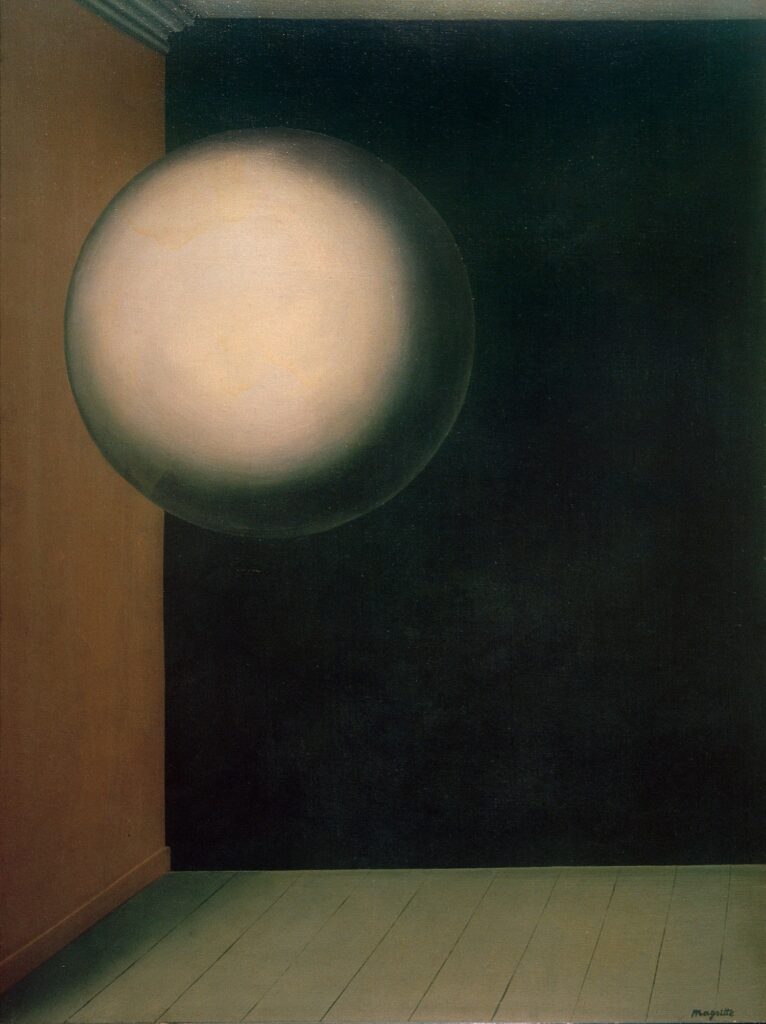
Humans have always looked up into the sky and said, “wtf is that floating orb?” And sometimes it has not been the sun OR the moon.
René Magritte looked into the void—whether of the world or his own unconscious, I do not know, ask a Magritte scholar—and saw a smooth, mysterious sphere, a precursor, if not an ancestor, to the satelloon.
In 1928 he put a human-sized orb in a space, if not exactly a room, in his painting La vie secrète [now at the Kunsthaus Zurich], which was one of many orbs in his one-person show at the Palais des Beaux-Arts in Brussells in 1932. Magritte’s poet friend Paul Colinet was inspired to write an orb-themed poem, and even give Magritte a little sketch of a guy standing on a floating orb.
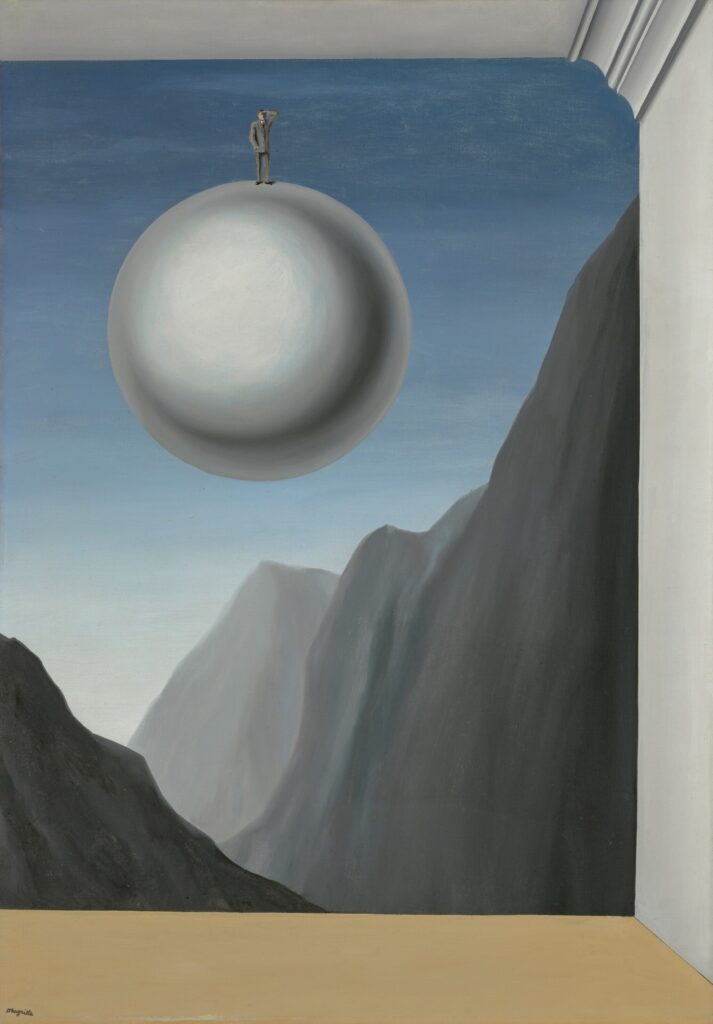
Which motif Magritte turned into a painting, La reconnaissance infinie, which is now for sale in London.
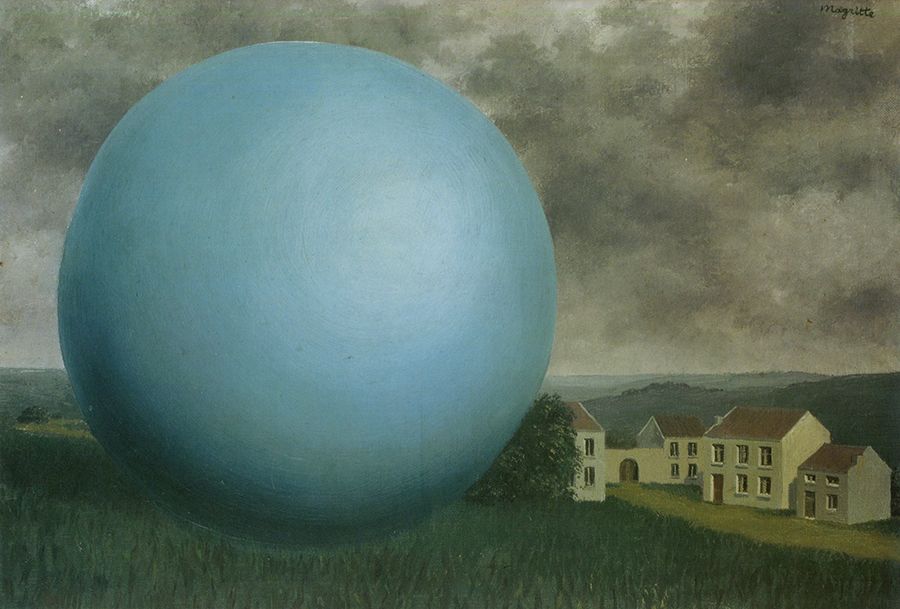
The rate of growth of Magritte’s orbs, and their escape into the wild put them into the timeline of the satelloon, though it’s not yet clear where. A giant orb overshadowed a house in l’Ombre Monumentale (1932), which echoes images of the test inflation of NASA’s Project Echo 1A in a disused dirigible hangar in 1960.
There is a direct resonance with Buckminster Fuller and Shoji Sadao’s 1960 concept for Floating Cloud Structures, mile-wide communities of thousands of people living not on, but inside floating geodesic spheres.
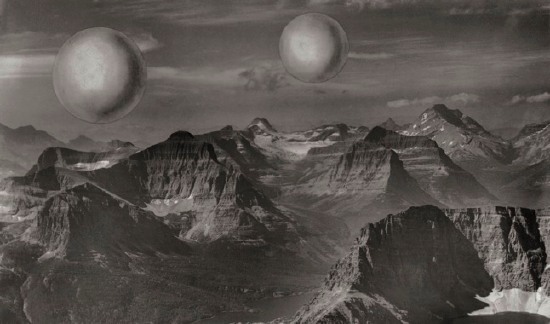
The genesis of NASA’s satelloons, Project Echo, traces to the aftermath of the Sputnik launch, and a conference over what to do with the V2 rockets spirited away from the nazis after WWII. But the concept of a giant floating orb orbiting the earth and visible to the naked eye originated in 1955 with Wernher von Braun himself; he proposed an American Star to dazzle the Asian mind. Did von Braun see or know of Magritte’s orbs?
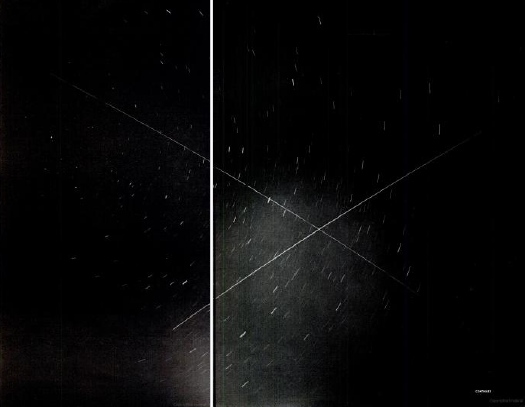
We know, at least, that Magritte lived long enough to see von Braun’s. Project Echo 1A launched in 1960, and Echo 2 launched in 1964. So for the last seven years of his life, his night sky was occasionally crossed by at least one, and sometimes two, floating orbs.
La reconnaissance infinie: mysterious fruit of the friendship between René Magritte and the poet Paul Colinet [christie’s magazine]
5 Mar 2025, Lot 108: René Magritte, La reconnaissance infinie, 1932, est GBP6-9m [update: sold for GBP 10.315m] [christies]
